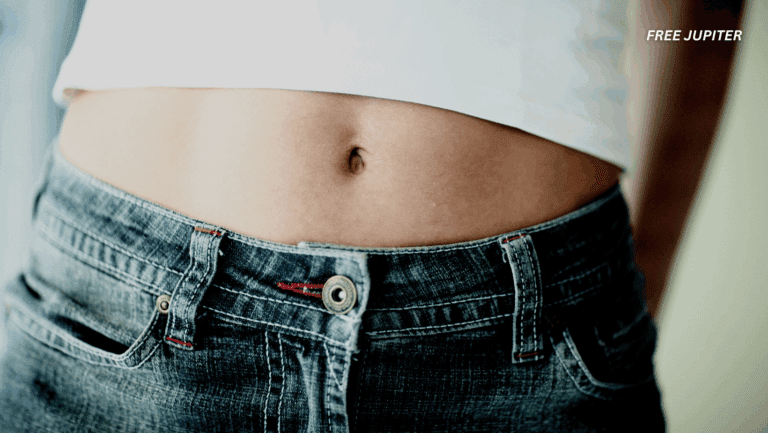Friendly Note: FreeJupiter.com shares general info for curious minds 🌟 Please fact-check all claims—and always check health matters with a professional 💙
Take a breath. Now take another—just like that. But here’s the kicker: no one in the world breathes exactly like you do. Not even close. In fact, your unique way of inhaling and exhaling might soon help doctors identify who you are and even tell how you’re feeling—mentally and physically.
A recent scientific discovery is breathing new life into how we understand our bodies. Researchers have found that each person’s breathing pattern is as distinct as a fingerprint. And what’s more, those patterns might hold the key to diagnosing everything from stress levels to sleep quality.
The Secret Symphony of Breath and Brain
Breathing is usually seen as a background act in the body’s daily performance. It just happens, automatically, while we go about our lives. But behind that simplicity lies a sophisticated network of brain activity, orchestrating every inhale and exhale with stunning precision.
According to Noam Sobel, a neurobiologist from Israel’s Weizmann Institute of Science, breathing is far more than just a lung function. “It has to be coordinated with almost everything,” he explains. That includes speaking, singing, swimming, or even just focusing on a task. Whether you’re whispering a secret or running a marathon, your breath works in harmony with various regions of the brain—from those that handle emotion to those that manage memory and movement.
Interestingly, researchers have found that breathing actually drives rhythmic brain waves in areas responsible for memory formation, like the hippocampus. When you inhale, it sparks electrical activity in the brain, helping solidify memories and regulate your emotions. It’s not just about staying alive—it’s about how you live.
Breathing Patterns as Personal ID
In the groundbreaking study published in Current Biology, scientists used a custom-designed, lightweight nasal sensor to measure airflow through the nose of 100 healthy adults over a full 24-hour period. The participants wore the device while doing regular activities: eating, sleeping, working, exercising, relaxing.
What they found was remarkable: each participant had a breathing pattern so specific that researchers could identify them with 96.8% accuracy based solely on that pattern. These “breathprints” were stable across time—even when the tests were repeated two years later.
In other words, your breath is like a biological signature. It doesn’t just keep you alive; it tells the world who you are.
Even more fascinating? This wasn’t a lab-based sniff test or a controlled breathing session. The data was collected in real-world, everyday environments, making the results highly applicable to real life.
Read more: Man Falls 30 Feet Off Cliff in Hawaii Trying to Get a Better View of the Kilauea Volcano Eruption
Health in Every Huff and Puff
Beyond just identity, your breathing pattern can reflect deeper insights into your body and mind. The study showed clear links between specific breath traits and factors such as:
- Body Mass Index (BMI)
- Sleep-wake rhythms (your internal body clock)
- Mental health markers like depression and anxiety
Participants who scored higher for anxiety had noticeably shorter inhales and more irregular pauses between breaths—especially while they slept. This wasn’t just a random quirk; it was a measurable, repeatable phenomenon.
One of the most telling signs? The pause between breaths. Some people consistently paused for one second after exhaling. Others had unpredictable gaps—one second here, five seconds there. This “pause variability” turned out to be a powerful predictor of emotional and mental state.
These subtle variations in how we breathe may soon become tools for understanding our inner world—no brain scan required.
Why the Nose Knows Best
So why is nasal breathing getting so much scientific attention?
It all comes down to evolution. The sense of smell—closely linked with nasal breathing—is the oldest sensory system in mammals. It’s deeply connected to the structure and function of the brain, especially areas dealing with emotion and memory.
Even today, despite our reliance on sight and sound, the nose maintains its VIP access to the brain. It’s a direct pathway, allowing scents (and airflow) to influence everything from how we remember a place to how we feel in a moment.
Daniel Kluger, a neuroscientist from Germany’s University of Münster, adds that this could be why tasks involving visual memory or spatial awareness tend to perform better when someone is inhaling. Your brain becomes more alert, more “tuned in” to stimuli. It’s like a temporary boost in sensory sensitivity with every breath in.
This could explain why certain breathing exercises—like deep belly breathing or alternate-nostril techniques—help people manage anxiety, increase focus, or fall asleep faster.
Read more: Engineers Invent Headset That Records Your Dreams—and Lets You Play Them Back When You Wake Up!
Could Your Breath Be a Medical Crystal Ball?
The idea of diagnosing illness from a breath isn’t entirely new. Doctors have used breath analysis for things like detecting alcohol levels or certain infections. But this new approach focuses on how you breathe, rather than what’s in your breath.
If further studies confirm the findings, we could see wearable breath-monitoring devices becoming a regular part of medical checkups—like heart monitors or fitness trackers. Scientists are already exploring how these breathing “signatures” could help screen for early signs of disease, monitor stress disorders, or even detect changes in neurological conditions.
And here’s where it gets even more intriguing: What if changing how you breathe could actually change how you feel?
Rewiring Your Mind With Your Breath
Sobel raises a critical question: Are people depressed because they breathe a certain way—or do they breathe that way because they’re depressed?
If breathing patterns can influence brain activity, and those patterns can be consciously changed, then breathing might one day become a powerful mental health tool. Imagine learning a specific breathing rhythm to improve your mood, sharpen focus, or even regulate your appetite.
This isn’t just wishful thinking. Mindfulness practices and therapies that emphasize breathwork—like yoga, meditation, and biofeedback—are already showing promise in reducing anxiety, managing chronic pain, and improving emotional regulation.
The future might see therapists and doctors prescribing specific breathing patterns instead of—or alongside—medications.
Read more: The ‘Ocean Spiral’: Japan’s Groundbreaking New Underwater City Will Run on Deep-Sea Thermal Energy
The Big Picture: What This Means for You
So the next time you take a breath, remember it’s not just oxygen you’re pulling in. You’re syncing your body and brain in a silent, complex rhythm that’s uniquely yours. Your breath reflects your emotions, your physical health, your state of mind—and possibly even your future well-being.
Science is still exploring the depths of what this connection truly means. But one thing’s clear: our breath is not just a passive function. It’s an untapped source of insight, and maybe even healing.
So go ahead—breathe deeply. Your body, your brain, and maybe even your future self will thank you for it.
Disclaimer: The information in this article is for general informational purposes only and is not medical advice. We are not doctors, and this website is run as a family hobby project. Always consult a qualified healthcare professional before making decisions about your health. Please fact-check any claims and use this content as a starting point, not a substitute for professional guidance.










